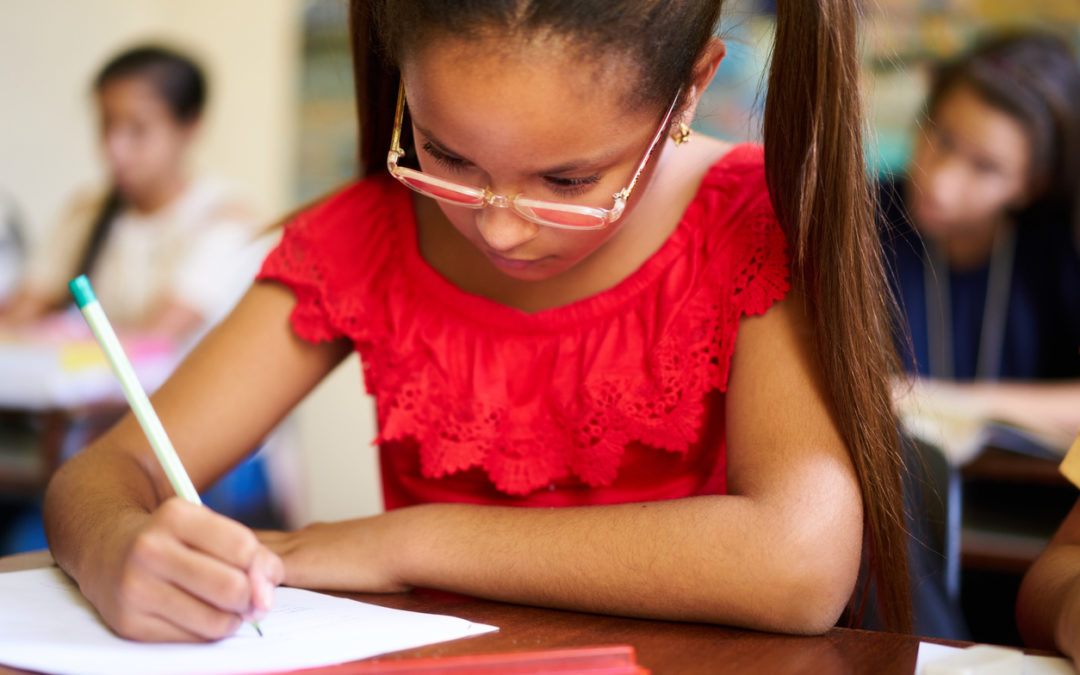4 Examples of Computational Thinking in the Classroom
To help teach computational thinking in the classroom, this article will review four project examples in math, English language arts, science and social studies. These can all be easily modified to fit different grade levels, too.
Example 1: Data Analysis in Math Class
Inquiry-driven projects use computational thinking to collect and analyze data algebraically. These quantitative variables can be mapped to find patterns from which students can abstract the most important information.
Details: In a middle school math class, students embarked on an inquiry-driven project in which they curated and collected data and analyzed it algebraically. They mapped the quantitative variables in scatter plots to identify trends and then used r-value representations to show their findings.
The teacher emphasized throughout this project that “data is a tool to get people to hear you.” With concise analysis and engaging visuals, students were able to create compelling projects on topics they were passionate about.
One student analyzed instances of breast cancer by using an online database to curate data dating back to 1995. Having had her mother diagnosed with the disease as well as two family friends, she wanted to study the rates of mortality and measure the rate of increases in diagnoses. Looking at the data, she applied computational thinking skills to find patterns and abstract the most important information.
As a bonus to computational thinking practice, students practiced other digital skills in this project like navigating databases, using online math tools to crunch the numbers, inputting data into spreadsheets, and building charts and graphs.
Here are some bonus lesson plans to review these skills with students.
Example 2: Understanding Character Connections in English Language Arts
Language arts classes are also opportunities to leverage computational thinking in the classroom. In this example, students contextualize literature and build a more complete understanding of reading by developing diagrams and interaction graphs to abstract connections between characters.
Details: In this example, students used computational thinking skills to perform literary analysis on books like Hamlet and Harry Potter. Students developed network diagrams and interaction graphs to abstract the different connections between characters.
This technique helped contextualize the literature for students so they can better create understanding about the work, like power dynamics or important relationships that drive the narrative. This also helped students build a more complete understanding of the reading and track the flow of narratives on anything from the Cat in the Hat to Beowulf.
As explained by the writer, this sort of analysis enabled students to understand the questions that data can answer and what data analysis can be automated. Beyond building better reading comprehension and computational thinking skills, students also practiced techniques like visual mapping and using multimedia resources to design understanding.
Example 3: Using Design Thinking to Build Models in Science
In this Science class, students applied computational thinking, physics, and engineering design to build earthquake resistant bridges. The unit started with understanding the function of bridges and the different types. Students then moved to studying earthquakes and the impact of their forces.
In order to design an earthquake resistant bridge, students applied both design thinking and computational thinking. Computational thinking enabled students to analyze a variety of bridge models to find patterns in their structure and abstract from this the important elements needed in a functional design. As they tested the different prototypes, computational thinking allowed them to collect data and find opportunities to improve the structure.
This can be a great unplugged project that hones student collaboration and critical thinking through working to design functional models and also enhance their engineering design skills.
Example 4: Decoding Cryptography in Social Studies
Details: In studying the importance of cryptography for sending coded messages in World War II, specifically focusing on the German Enigma machine, students learned how secret codes can be both developed and cracked using algorithms and other aspects of computational thinking. In this example of computational thinking, students designed their own cipher wheel to send coded messages and learned how algorithms are integral to developing coded languages.
While this example is great to engage students in a unit about World War II with collaborative, hands-on practice, it can also be translated into similar projects for other coded languages used in combat, Morse code, or language in general. Language, in essence, is a series of patterns from which we can abstract different rules, making it an excellent way to engage students in computational thinking in real-world contexts.
Beyond growing their understanding of code in World War II, students also deepen their understanding of language and ability to recognize patterns that exist all around us.
Bonus Examples of Computational Thinking
Why stop with these examples of computational thinking? Here are some additional resources to spark inspiration for computational thinking in the classroom:
- Arts, language arts, and math project ideas from Teach Ontario
- Computational thinking integration in physical education from PBS
- Algorithm for classroom rules from Getting Smart
- Other quick ideas for computational thinking integration from Digital Promise
- Cross-curricular computational thinking lesson plans from Learning.com

Learning.com Team
Staff Writers
Founded in 1999, Learning.com provides educators with solutions to prepare their students with critical digital skills. Our web-based curriculum for grades K-12 engages students as they learn keyboarding, online safety, applied productivity tools, computational thinking, coding and more.
Further Reading
How Keyboarding Skills Enhance Digital Literacy Across Subjects for K-12 Students
In today's rapidly evolving digital landscape, digital literacy is essential for students to thrive in both their academic and future professional...
What Is Digital Citizenship? Key Skills & Best Practices for Students
In a world dominated by virtual interactions, being a responsible digital citizen has never been more crucial. Students today grow up with social...
Teaching Children How to Effectively Handle Cyberbullying
In today’s digital age, online safety is a critical concern for children navigating the internet. While the internet provides endless opportunities...




